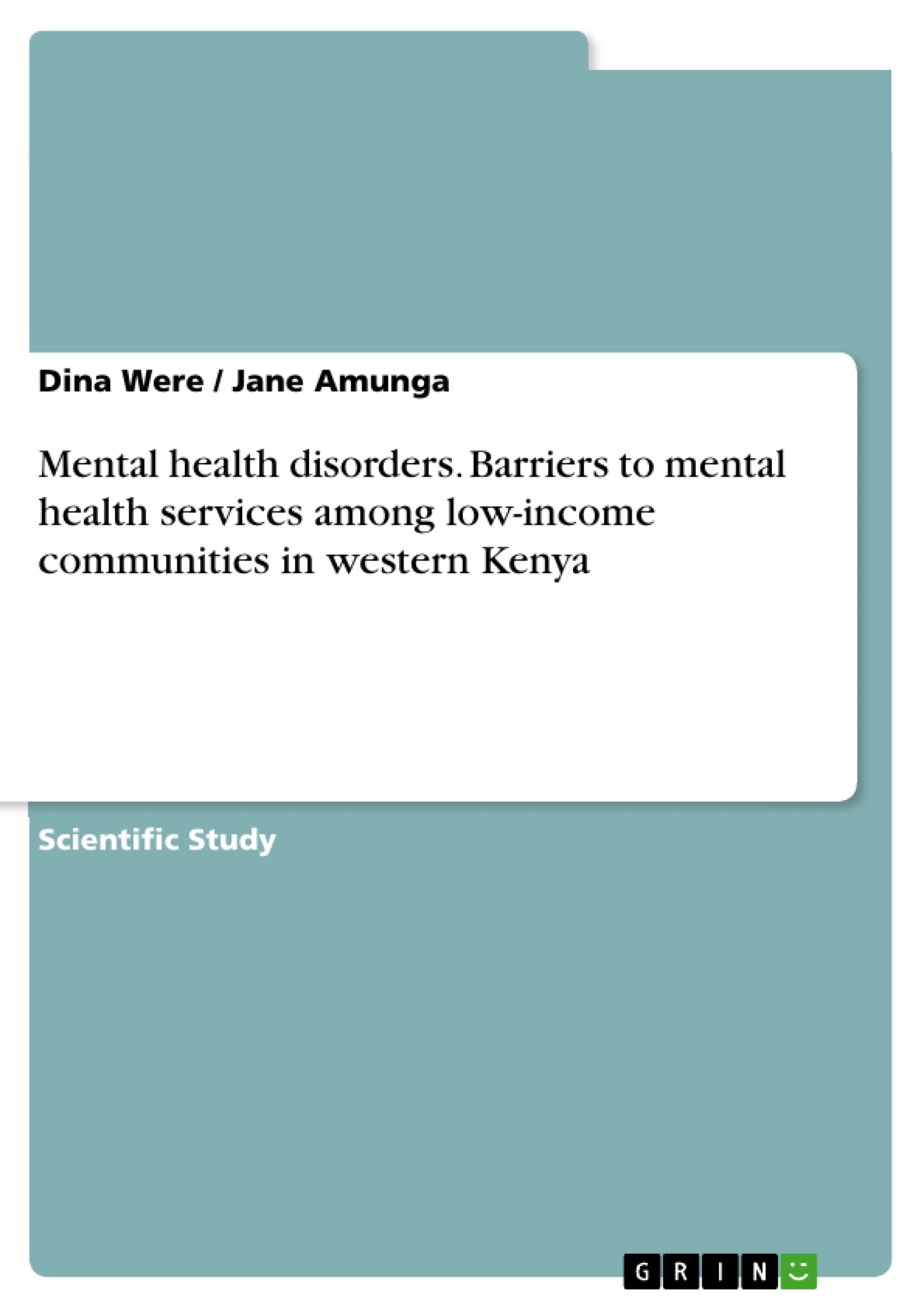The goal of the work was to uncover the barriers to access mental health services among low income communities in western Kenya. The survey was carried out through interviews, from a sample of 114 respondents who included lecturers, university students, local leaders, community members, medical personnel and community health workers and spiritual leaders in the western part of Kenya.
Globally mental health illnesses affect more than 25 percent of all people during their lifetime. Issues on mental health are increasing worldwide and the causes are varied and many. According to the World Health Organization, mentally ill people often lack access to education, healthcare and opportunities to earn a decent living, which limits their chances of economic development and deprives them of social protection and recognition within the community.
Inhaltsverzeichnis (Table of Contents)
- Introduction
- Causes of mental health disorders
- Barriers to mental health services
- Mental illness and perception
- Intervention strategies to mental health in low income communities
- Conclusion
- References
Zielsetzung und Themenschwerpunkte (Objectives and Key Themes)
This qualitative survey aims to investigate the barriers to accessing mental health services in low-income communities of Western Kenya. The study was conducted through interviews with a sample of 114 individuals including lecturers, university students, local leaders, community members, medical personnel, community health workers, and spiritual leaders.
- Causes of mental health disorders in Western Kenya
- Intervention strategies for mental health disorders in low-income communities in Western Kenya
- Barriers to accessing mental health services among low-income communities in Western Kenya
- The impact of stigma and misconceptions surrounding mental illness on access to care
- The influence of cultural beliefs and traditional practices on mental health perceptions and treatment-seeking behaviors
Zusammenfassung der Kapitel (Chapter Summaries)
- Introduction: This chapter provides a global context for the study, highlighting the increasing burden of mental illnesses and disorders on health and socio-economic well-being, particularly in developing countries. It also emphasizes the lack of access to education, healthcare, and economic opportunities for individuals with mental illness and the associated human rights violations they face.
- Causes of mental health disorders: This chapter explores the various causes of mental disorders in Western Kenya, drawing on insights from previous studies and the findings of this research. It highlights the significance of traditional beliefs and practices, particularly the role of witchcraft, curses, and demonic forces in shaping perceptions about mental illness.
- Barriers to mental health services: This chapter examines the specific barriers to accessing mental health services among low-income communities in Western Kenya. The chapter delves into the social, economic, and cultural factors that contribute to the delay or avoidance of seeking professional help for mental health issues.
- Mental illness and perception: This chapter focuses on the perceptions of mental illness held by individuals in Western Kenya. It analyzes the role of stigma, cultural beliefs, and traditional practices in shaping attitudes and behaviors towards people with mental disorders.
- Intervention strategies to mental health in low income communities: This chapter explores strategies for addressing mental health issues in low-income communities, emphasizing the need for culturally appropriate interventions that consider the specific needs and perspectives of the target population.
Schlüsselwörter (Keywords)
Mental disorders, mental health, low-income communities, Western Kenya, access to services, stigma, cultural beliefs, intervention strategies, community-based care, traditional practices, human rights.
- Quote paper
- Dina Were (Author), Jane Amunga (Author), 2005, Mental health disorders. Barriers to mental health services among low-income communities in western Kenya, Munich, GRIN Verlag, https://www.hausarbeiten.de/document/585136


